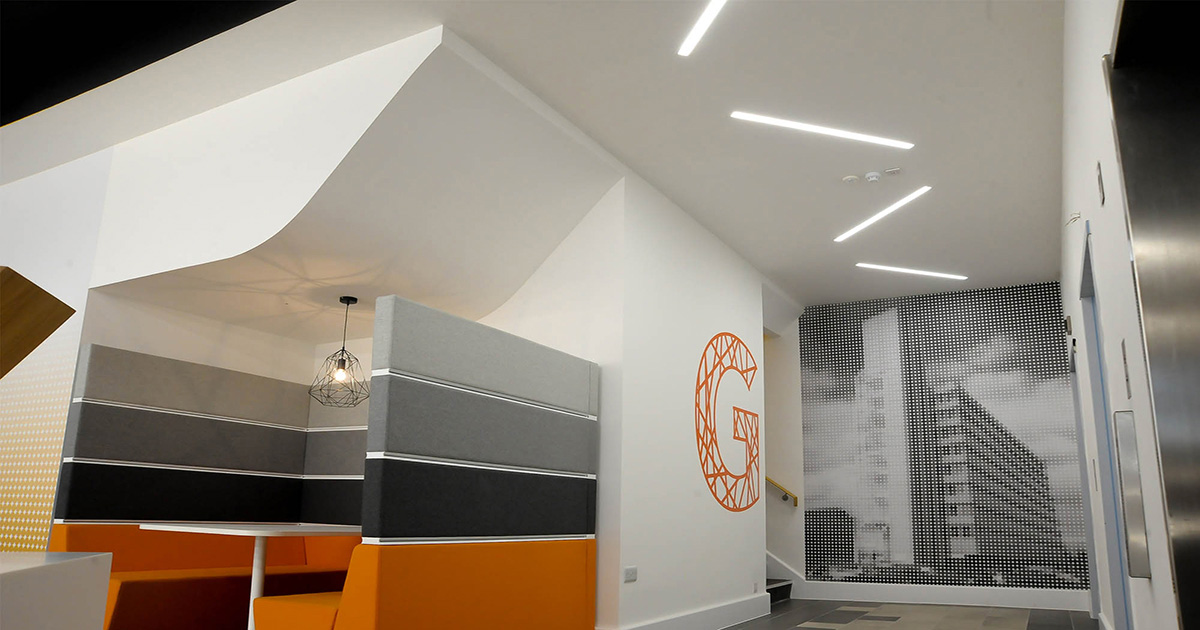LIGHTING DESIGN: 5 TIPS FOR INTERIOR DESIGNERS
Jul 31,2020
The modern commercial environment is driven by appearance which means that lighting design has become much more than just ticking a few lux level boxes. In fact, lighting design is now an essential part of the commercial design process and the contemporary approach to lighting design has never been so exciting.
No longer is office lighting simply one-level luminance. You can’t just fill every area with a typical ‘General Area’ 500 lux. Restaurants and bars can no longer bask in lowlight until closing time. Instead, these environments need to distinguish themselves with cool layered luminaires that highlight all of the architectural and design features of the room.
Bringing your vision to life will involve supporting the aspirations and values of your client’s business and brand with the well-thought-out method embracing the full array of interior lighting on offer. Here are 5 great lighting design tips for interior designers to help you create magical atmospheres.
1) LIGHTING REFLECTANCE
Lighting is everything in interior design! It improves the aesthetic appeal and creates the mood and ambience of any environment. Colour psychology is the study of colour as a determinant of human behaviour. It has shown that we subconsciously react to various colours and that it can directly influence behaviour, emotion and state of being.
For offices, this is great for workplace productivity but in bars/restaurants/hotels it’s just as important for perceptions from visitors. To make sure your lighting is making the most of your colour scheme, you need to actively be looking for LRV.
Light Reflectance Values (LRV) are a measurable percentage of visible and usable light that are reflected from a surface when illuminated by a light source. LRV is measured on a scale that ranges from zero (absolute black, absorbing all light and heat) to 100 percent (pure white, reflecting all light).
The reason LRV is a big deal is that lighting can change the way a colour looks and the values of a colour help lighting designers to calculate the number and type of light fixtures needed to provide a certain amount of light for interior spaces.
Colour temperature, brightness, lumen output and CRI (Colour Rendering Index) all affect the way a colour feels. LED lighting is great for all colours and can be used across the whole spectrum.

2) CEILING HEIGHT IS IMPORTANT
Height has a big impact on the efficiency and appearance of lighting. In a commercial environment, being able to complete tasks and activities is a key function of lighting and all types of lighting can change the way surfaces and task areas are illuminated.
For higher ceilings, some types of luminaires won’t achieve suitable coverage but suspended lighting can not only be adjusted/selected to illuminate work planes, surfaces and task areas but the inclusion of levelled lighting is great for aesthetic design.
For lower ceilings, recessed luminaires can successfully create the appearance of added space due to their unobtrusive, smooth finish into the surface.

3) LED LINEAR WITH DOWNLIGHTS
If you are looking for a more modern way to light a commercial space, having downlights is an ideal choice. Downlights help to improve the light quality in every area they are installed and are effectual additions for lots of applications.
Downlights are best used for task lighting and ambient lighting when used with a dimming switch. When well-placed, they can create a big impact. The number of downlights that you require is determined by the size of your room and the illuminance you want but with LED linear downlights, achieving consistent and uninterrupted continuous lighting is simple.
4) SHORTER LINEAR IS COOL
Carrying on from using LED linear lighting in a creative way, another top tip to remember is that the size of your lights is also a great design tool. Long runs of LED lighting are perfect for consistent lighting but shorter linear lighting, either interweaved or as a stand-alone pendant, is a great way to make a statement or achieve better coverage as part of a layered lighting design.
LED linear lighting definitely makes a commercial environment look more contemporary and the subtle inclusion of shorter runs of LED lighting in stairways or showcasing areas can really strengthen the aesthetic of a room.


This article comes from JOHNCULLENLIGHTING company
- Latest news
34 genius hacks for LED strip lights
Apr 02,2021LED Strip Lights: How Are They Made?
Nov 30,2020LIVING ROOM LIGHTING IDEAS
Oct 30,2020LED LIGHTING VS. FLUORESCENT LIGHTING – THE FACTS
Sep 29,2020HOW TO PLAN YOUR KITCHEN LIGHTING
Aug 27,2020LIGHTING DESIGN: 5 TIPS FOR INTERIOR DESIGNERS
Jul 31,2020HOW TO USE INTEGRATED LINEAR LIGHTING
Jun 02,2020
